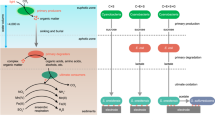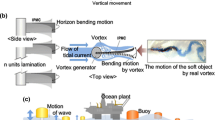Abstract
One of the primary problems that hinders humans in their efforts to explore and develop the ocean realms is the lack of a ready supply of oxygen. Practical methods have not yet been devised for using the vast amount of oxygen dissolved in ocean waters for human life support in an undersea environment. Fish and other water-breathing animals have solved this problem by utilizing hemoglobin as a molecular oxygen pump. To achieve a similar oxygen extraction capability, we have explored various methods of oxygen extraction that are based on immobilized forms of hemoglobin. Improved methods for immobilizing hemoglobin or other oxygen carrying molecules and a method for extracting the available dissolved oxygen from natural waters and other fluids are described. The techniques that have been developed allow for immobilization of oxygen carriers at high concentration in a state where they are capable of reversible oxygen binding, and also allow for regeneration of the carrier in the event of oxidation of the oxygen-binding site.
Similar content being viewed by others
References
Miller, S. L., and Urey, H. C. (1959),Science 130, 245.
Degens, E. T., and Matheja, J. (1971), in Kimball, A. P., and Oro, J., eds.,Prebiotic and Biochemical Evolution, North-Holland Publishing Co., Amsterdam-London, p. 39.
Crick, F. H. C. (1981),Life Itself: Its Origins and Nature, S&S Publishing Co., Central Point, Oregon.
Oparin, A. I. (1959),The Origin of Life on the Earth, Macmillan, New York, 691 pp.
Brown, H. (1947), in Kuiper, G. P.,The Atmosphere of the Earth and Planets, Macmillan, New York, 376 pp.
Bonaventura, J., Bonaventura, C., and Sullivan, B. (1975),J. Exp. Zool. 194, 155.
Lapennas, G., and Bonaventura, J. (1981), inMethods in Enzymology, Vol. 76, Academic Press, New York, pp. 449–470.
Lapennas, G., and Bonaventura, J. (1983),Anal. Biochem., submitted.
Bunn, H. F. (1971),Science 172, 1049.
Currell, D. L., Law, B., Stevens, M., Murata, P., Ioppolo, C., and Martini, F. (1981),Biochem. Biophys. Res. Comm. 102, 348.
Benesch, R., Benesch, R. E., Kwong, S., Acharya, A. S., and Manning, J. M. (1982),J. Biol. Chem. 257, 1320.
Bonaventura, C., and Bonaventura, J. (1980),Amer. Zool. 20, 131.
Hoffman, B. M., and Petering, D. H. (1970),Proc. Natl. Acad. Sci. USA 67, 637.
Change, C. K., and Traylor, T. G. (1973),J. Am. Chem. Soc. 95, 5810.
Bonaventura, J., and Bonaventura, C. (1982), US Patent Number 4, 343, 715.
Author information
Authors and Affiliations
Rights and permissions
About this article
Cite this article
Bonaventura, C., Bonaventura, J., Hooper, I.R. et al. Underwater life support based on immobilized oxygen carriers. Appl Biochem Biotechnol 9, 65–80 (1984). https://doi.org/10.1007/BF02798375
Received:
Accepted:
Issue Date:
DOI: https://doi.org/10.1007/BF02798375




